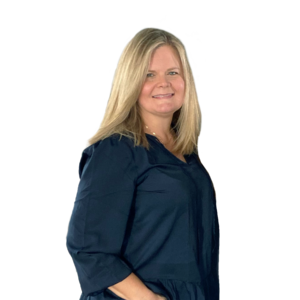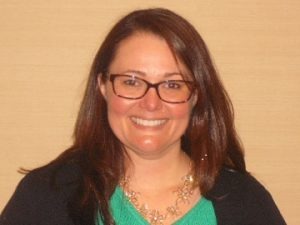Is it Time to Revisit Your Facility’s Natural Disaster Plan?

Sheldon Yellen, CEO, BELFOR Property Restoration
During the past year, the United States has endured tornadoes, hurricanes, wildfires, and more. With natural disasters being unpredictable and often fast-moving, a senior care community’s natural disaster plan can play an integral role in keeping staff and residents safe. Three experts shared best practices with us to help ensure your facility’s natural disaster plan is solid.
The Importance of Your Natural Disaster Plan
Sheldon Yellen, CEO of BELFOR Property Restoration, the world’s largest disaster recovery and property restoration company, notes that it’s critical for senior care facilities to have a plan in place. He explains that a well-thought-out plan should answer the following questions:
- How will we safely and efficiently manage weather-related emergencies?
- Is there a safe evacuation route?
- Are there disaster go-kits easily accessible?
- Are there hazards such as freestanding bookcases or hanging mirrors that can be better secured?
Beyond the practical importance of a disaster plan, Donna Adendorff, LNHA, RAC-MT, a research and development consultant for The Compliance Store, explains that these plans are mandated. “For skilled nursing centers, a natural disaster plan is a requirement of participation established by the Centers for Medicare & Medicaid Services (CMS),” she notes. “More importantly, it is to secure the safety and welfare of the vulnerable and frail residents in our care, our staff, and any visitors.”

Donna Adendorff, LNHA, RAC-MT, The Compliance Store
Yellen also highlights the importance of a communications plan element. That plan would mean that residents or their care managers would know how to communicate to loved ones during an emergency.
Having a quality natural disaster plan in place can help facilities to better navigate disasters, if they occur. Michele Mummert, RN, director of research and development for The Compliance Store, highlights the role a plan can play in a disaster.
“Although many emergencies are unexpected, some can be anticipated if a facility has thoroughly assessed its risks,” she says. “A comprehensive and thoughtful plan should help eliminate or lessen the effects of identified hazards. It also lessens the potential or risk of future losses for your residents, staff, visitors, and physical plant.”
Essential Elements of a Disaster Plan
When it comes to designing or reevaluating your disaster plan, it’s vital to ensure that it contains certain key elements. Adendorff refers to the Emergency Preparedness Requirements for Medicare and Medicaid Participating Providers and Suppliers regulation, which outlines four core elements that apply to all 17 provider types. Those key elements are:
- Risk assessment and emergency planning
- Communication plan
- Policies and procedures
- Training and testing
Best Practices in Creating or Revising Your Natural Disaster Plan
When creating or revising a plan, it’s important that the facility leadership leads, guides, and directs the plan, notes Mummert. “To do so, they have to develop a process to manage two-way communication about the plan with all levels of staff. Involvement of all staff and a heightened awareness of the plan is beneficial when a “real-life” disaster occurs.”
She notes that facilities should also connect with community partners who would be involved in the plan, including the local emergency management agencies, local health care coalition, public health, police departments, transportation agencies, National Guard, utility companies, waste management companies, fire departments, and medical providers like local hospitals and emergency departments.

Michele Mummert, RN, The Compliance Store
As you create your plan, it’s also important to ensure that you have the supplies necessary to implement that plan. Yellen suggests creating disaster go-kits that include items like water, non-perishable food, flashlights, batteries, and whistles.
“In addition, think about what modern items individuals might need, such as laptops and phone chargers,” he advises. “It’s also important to consider if residents need extra eyeglasses or hearing aids, batteries for medical supplies, prescription medication, or a record of medical conditions in a waterproof container, in addition to any important paperwork.”
“Remember your nearby people resources,” advises Adendorff. “Maybe it’s the pastor of the church next door or your neighbor across the street who loves to hunt. They may have a backhoe or a towing device on their truck that could help when a disaster scatters debris and trees, blocking safe passage for your residents.”
She recommends that facilities develop and foster relationships with their neighbors and community members. “They can make a difference during challenging times. Know how to reach your people resources in the event of a disaster. The planning process and the resulting relationships are just as important as the resulting document.”
Adendorff notes that there are many available resources to help with disaster planning. CMS provides many resources, including a template and checklist. “Your local health care coalition is also a very helpful resource,” she notes. “The strength of health care coalitions is that they reflect the unique needs and characteristics of each local jurisdiction.”
“CMS requires that facilities annually complete two exercises and document their participation,” Adendorff explains. “CMS and the National Healthcare Preparedness Program have asked that health care coalitions assist in providing documentation to support verification of the Emergency Preparedness training and testing exercise requirements for skilled nursing facilities.”
Once the plan is created, Mummert advises that it should be kept in a location that’s accessible to staff 24 hours a day. Adendorff states that staff should know the plan’s location and should also be aware of its core elements and the defined roles.
Hopefully your facility will never need to rely on your natural disaster plan, but taking the time to create a detailed, quality plan can help your staff to navigate the unexpected.

Paige Cerulli is a contributing writer to i Advance Senior Care.
Related Articles
Topics: Facility management , Featured Articles , Leadership , Policy , Regulatory Compliance , Resident Care , Training











